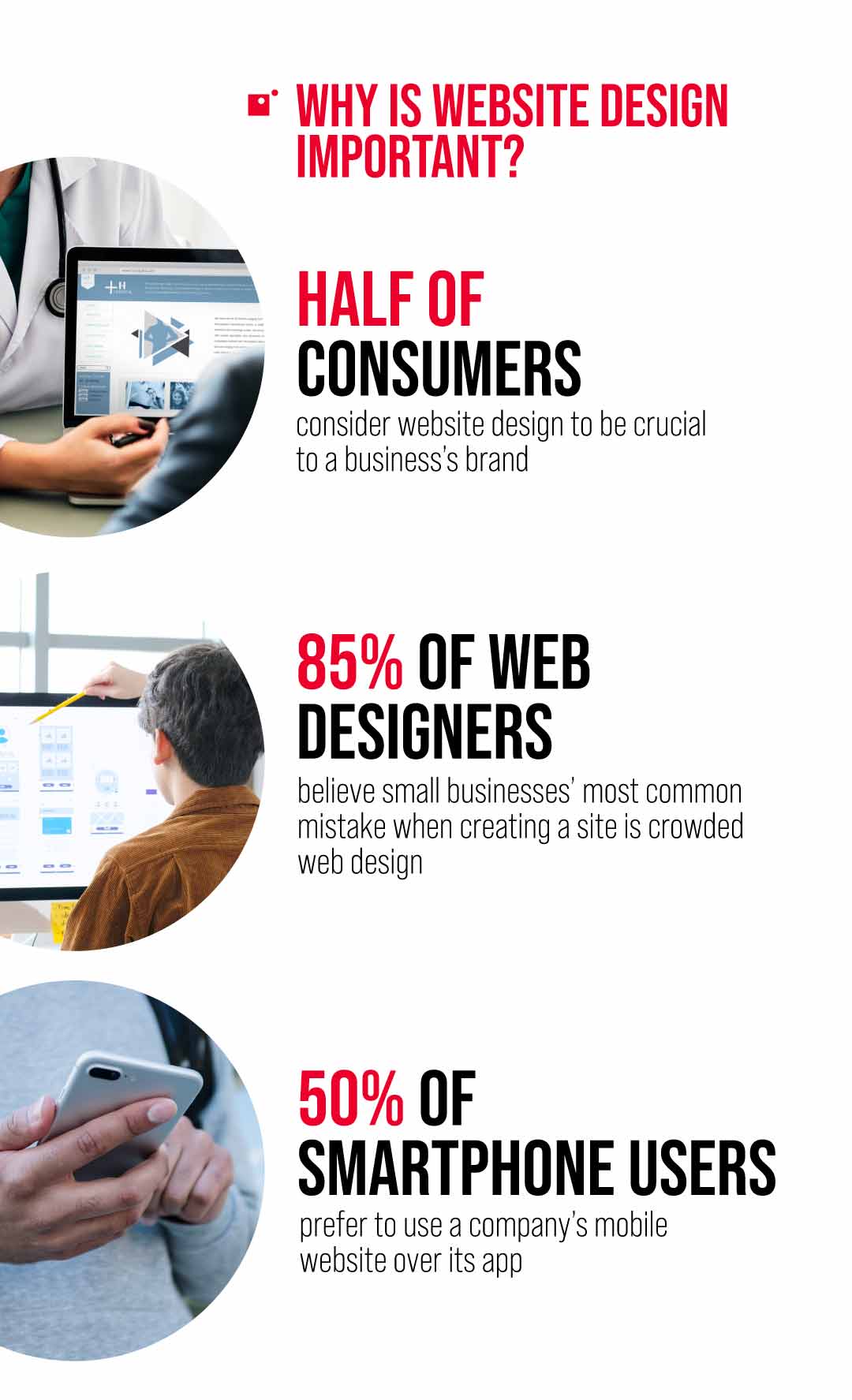Having a website makes your healthcare organization easier to find and establishes a touchpoint with patients looking for your services. However, ineffective healthcare website design can leave a bad impression on your customers.
For many patients, your website might be the first impression they have of your practice. Just as you would make your physical facility as welcoming and practical as possible, creating your online site the same way will make patients feel safe in your hands.
This blog brings you tips on how to enhance website design, so that your healthcare organization can have a polished online image.
1. Make Your Site Easy to Navigate
Your healthcare website will be a valuable tool for your current and future patients if the resources and information they are looking for is easy to find. The website architecture should highlight the most-used features so your patients can get what they need without unnecessary steps or confusion.
Many reliable healthcare websites are designed with the most useful tabs at the top of the site. These include:
- Find a doctor
- Our locations
- Services
- Conditions and treatments
- Patient portal
Shortening the process of finding the right practitioner results in more appointments for your practice. A patient portal makes it easy for your clients to reach their appointment information, statements, and billing.
Additionally, consider adding a search bar to provide them with a quick path to any resource they may need. Consider placing one near the top of your web page.
A congested website that is hard to navigate will result in frustrated patients. Healthcare website design that takes into account your customers’ needs and gives them a painless browsing experience will increase patient retention.
2. Design an Attractive Site Aligned with Your Brand
Although this may seem like a superfluous requirement, the way your website looks does influence your patients’ opinion of you.
Half of consumers believe that website design is crucial to a business' overall brand.
The last two years drove many patients to use a practice’s website to get healthcare information and tips, make and attend telehealth appointments, and access their billing. Though these are all practical uses, if a website is too crowded or outdated, patients might feel overwhelmed or confused with the amount of information.
84.6% of web designers believe crowded web design is the most common mistake made by small businesses.
Many modern businesses opt for a clean, minimalist design when building their website. However, this does not imply that you should not focus on your brand, the colors and images that represent it, and the feeling you want to ignite in your patients when they visit your website.
Good healthcare website design will take into account your company’s brand and mission, and ensure your patients get a sense of optimism and reliability when visiting your website.
Related Infographic: How Important Is Your Website User Experience?
3. Use Mobile Optimization
Cellphones are a ubiquitous part of life nowadays. If your healthcare website is not optimized for mobile users, you may be losing up to half of your clientele.
50% of smartphone users are more likely to use a company or brand's mobile site when browsing or shopping on a smartphone because they don't want to download an app.
Mobile optimization ensures that the most important features appear organized, buttons are bigger, images are smaller, and text is larger to make navigation easy.
Having optimized healthcare website design will result in patients’ being able to access your resources, begin communications with you, and develop a better relationship with your brand from anywhere.
4. Make Your Healthcare Website Accessible
Since your website is targeted to people who need health services, including people with visual and auditory disabilities and the elderly, it makes sense to make it as accessible as possible.
This will not only help your patients reach the resources they need, but also prevent any lawsuits against your business.
From 2019 to 2021, the number of website accessibility lawsuits filed in federal court increased from 2,256 to 2,895.
Following the Web Content Accessibility Guidelines (WCAG) when developing your healthcare website design will give you a blueprint to make your website more inclusive.
One of the requirements needed to make website design accessible are large and contrasting fonts. Ensuring people with impaired vision can read your website by enlarging fonts as well as using contrasting colors will bring you one step closer to accessibility.
All buttons on an accessible website should also be big enough for patients to find them and easily touch them to go to the desired page.
Another aspect to consider is adding alternative text to images. This is text describing images on your site that a screen reader app can speak aloud to someone with a visual impairment. It’s best to ensure the image alt text is relevant and helpful to the reader.
Consider adding a language option to increase accessibility to people who speak English as a second language. Depending on the demographics of your patients, this can also ensure higher retention.
Related Blog: 5 Tools to Increase Patient Retention
5. Provide Value for Your Patients
Apart from making it easy for your customers to reach the resources they need, providing value in your website is another way to interact and build rapport with them.
Businesses of all kinds are generating leads online by creating content that is informative and engaging. Of course, a healthcare website should provide content that is relevant to patients. Content related to one’s health can be intimidating, so providing your patients with health-tips and expert-sourced health information will reassure them.
For example, blogs about current medical findings, videos covering the latest Covid-19 updates, or infographics detailing tips to stay healthy would be greatly appreciated by patients.
51% of content consumption derives from organic search.
Consider also the importance of photography and graphics in your website. When people visit a healthcare website, they want to feel reassured and safe.
Therefore, it’s imperative to provide the appropriate imagery. Pictures of healthy people, families enjoying each other’s company, and patients happily chatting with a doctor can get you started. This simple technique will help your clients trust you more.
Bottom Line
Developing the right healthcare website design will lead to higher patient retention, improved trust, and a better brand image.
Making your website easy to navigate, accessible, and optimized for mobile use will ensure patients of all abilities in all places can reach the services or information you provide.
If your website has a simple, yet attractive design and provides valuable content, customers visiting it will feel that your healthcare organization is trustworthy.
Using these tactics to elevate your website design will result in happier patients, a more successful business, and a respected reputation in the healthcare industry.
Interested in upgrading your website to one that reflects your mission and image? Our eBook, What Makes a Quality Website?, shows you the components of a competitive website, security considerations, how to leverage technology, and more. Click to access it now!





